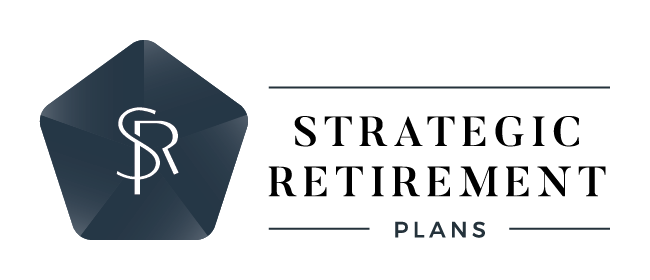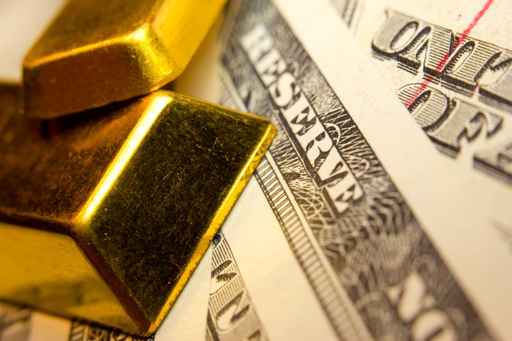You couldn’t have missed it. Only stages full of GOP presidential candidates or the Super Bowl have ever had more media attention. Yes, we are talking about the Federal Reserve’s thundering announcement on Thursday – of nothing. The Fed decided to keep interest rates at zero, for at least the next few months, after holding them near zero for over six years.
In one sense, this is a non-event. We have been in this same spot for quite some time. In spite of three rounds (and $3.6 trillion) of Quantitative Easing and very low interest rates, the US economy remains in a Plow Horse, low-inflation recovery. Japan has been doing QE for decades and its economy isn’t growing, while the European economy is weak and its stock markets are down since QE II started back in March.
In other words, all the gnashing of teeth about the Fed seems like a huge waste of time. This is especially true when we consider the fact that raising interest rates wouldn’t be actually changing monetary policy at all.
Over time, investors have been confused (as happens during a street-side shell game) about what monetary policy really is and how it works. Many people have come to believe the transmission mechanism of Fed policy is interest rates, but this isn’t true and never has been.
Monetary policy works as the Fed adds or subtracts reserves from the banking system, and by adding or subtracting reserves they are able to increase or decrease “aggregate demand” or what we can think of as “total spending.”
When a counterfeiter puts more money into a neighborhood, the economy gets a temporary pop. When the FBI takes the money away, it slumps. The reason QE never worked as advertised is that when the Fed “printed money” in exchange for bonds, the banks that sold the Fed the bonds held the money in “excess reserves.” The neighborhood never spent the counterfeiter’s money. The Fed’s balance sheet has grown 26% annualized over the past seven years, but the M2 measure of money (total deposits in all banks) has grown only 6.6% per year.
All those excess reserves are still out there, un-multiplied. That’s why all the crazy forecasts of hyper-inflation, $5,000 gold and a collapsing dollar never came true.
And here’s the rub. The Fed does not intend to reduce those reserves anytime soon, and would not have reduced them by one dime last week even if they had raised interest rates.
Throughout history, when the Fed wanted the federal funds rate to rise, it withdrew reserves from the banking system by selling bonds to banks. Yes, interest rates would rise because liquidity was withdrawn, but the impact on the economy was from the slowdown in money growth, not the rise in rates.
If the Fed would have raised rates last week, reserves would have stayed exactly the same. All the Fed would have done is announce that it was paying more to banks on excess reserves, as an enticement not to lend them. Every dollar of excess reserves would have remained in the system. A rate hike would not rip away the punch bowl; in fact the punch bowl would still be overflowing with excess reserves waiting for someone to slurp them up.
In the past, when the Fed has raised rates, banks did not hold any significant amount of excess reserves. So higher short-term rates meant it was tougher for banks to acquire the funds they wanted to lend. Now, many banks are filled to the brim with excess reserves and are barely trading federal funds among each other.
Sometimes they say, “follow the money,” but we suggest “follow the profits” to understand Fed actions that confuse you. So let’s do it. Right now the Fed owns $4.2 trillion in bonds which pay whatever they pay, while it gives banks ¼% on reserves. The “spread” generated a profit last year of roughly $100 billion, which the Fed then turned over to the Treasury. If the Fed would have increased what it paid banks on reserves to ½%, this would have reduced the Treasury cash inflow by about $7 billion over the next year and this money would have gone to banks. In other words, the Fed and Treasury have an incentive to keep rates very low so that their profits stay high.
The biggest problem the US has now with its economic management team (including the Fed) is that it has spread the narrative that only QE and other government programs saved the economy during the crisis. We do not believe this one iota. In fact, we believe government rules forced Fannie Mae and Freddie Mac to buy sub-prime mortgage bonds. That created the crisis. Yet, it serves government interests to blame it on banks and the private sector.
This has helped create a cottage industry of Black-Swan birdwatchers. Instead of looking for an answer, they just claim 2008 was like a severe earthquake that was
undetectable. The pessimists create fear as they find a new Black Swan every week, which, for investors who believe this stuff, is terrifying. But they have also enhanced the narrative to include the idea that if the Fed raises rates, the only support for growth will be ripped away.
This is also a misconception. Does anyone with common sense really believe that QE and zero percent rates invented the Apple Watch, or increased the efficiency of fracking, or created Uber, vertical farming, 3-D printing, the cure for Hep-C, or any of the other massively wonderful new technologies and inventions we have seen put in place in the past six years?
The Fed does not cause real, long-term wealth creation. It never has and it never will. It either accommodates growth by printing the right amount of money, therefore avoiding deflation, or it prints too much money, which won’t stop growth but will cause inflation. It can cause harm by allowing the money supply to collapse, but once mark-to-market accounting was fixed in March 2009, that possibility evaporated.
There is an argument running around that says if the Fed wouldn’t, or couldn’t, raise interest rates, then there must really be something wrong with the economy. This argument is sophomoric. It gives the Fed some kind of supreme, omnipotent power of knowledge that no one else has. But, other than private bank information and probably some foreign government secrets, the Fed has access to the same data that we do and none of it suggests the US economy needs zero percent interest rates. Initial claims have been below 300,000 for 29 straight weeks. And anyone who claims 173,000 new jobs is a clear sign of economic problems, especially in August (which is so often revised higher), is spinning the data.
Yes, China’s growth has slowed to 7%, from 10.6%. So what? Japan collapsed in 1990 when it was the #2 economy in the world, and the next ten years were fabulous for US investors.
All in all, what is really going on is that so many people think there are Black Swans flying around everywhere and that the only way to protect the US economy from them is with an Uber-Dove. It looks like Janet Yellen has decided she is that Uber-Dove, despite a real lack of evidence that Fed policy has protected the US at all in the past six years.
Source:
Brian S. Wesbury, Chief Economist
Robert Stein, Deputy Chief Economist
of First Trust AdvisorsDate: 9/21/2015
This information contains forward-looking statements about various economic trends and strategies. You are cautioned that such forward-looking statements are subject to significant business, economic and competitive uncertainties and actual results could be materially different. There are no guarantees associated with any forecast and the opinions stated here are subject to change at any time and are the opinion of the individual strategist. Data comes from the following sources: Census Bureau, Bureau of Labor Statistics, Bureau of Economic Analysis, the Federal Reserve Board, and Haver Analytics. Data is taken from sources generally believed to be reliable but no guarantee is given to its accuracy.
Fixed insurance products and services are offered through Strategic Retirement Plans or CES Insurance Agency.
The accompanying pages have been developed by an independent third party. Commonwealth Financial Network is not responsible for their content and does not guarantee their accuracy or completeness, and they should not be relied upon as such. These materials are general in nature and do not address your specific situation. For your specific investment needs, please discuss your individual circumstances with your representative. Commonwealth does not provide tax or legal advice, and nothing in the accompanying pages should be construed as specific tax or legal advice. Securities offered through Commonwealth Financial Network, Member FINRA/SIPC.


